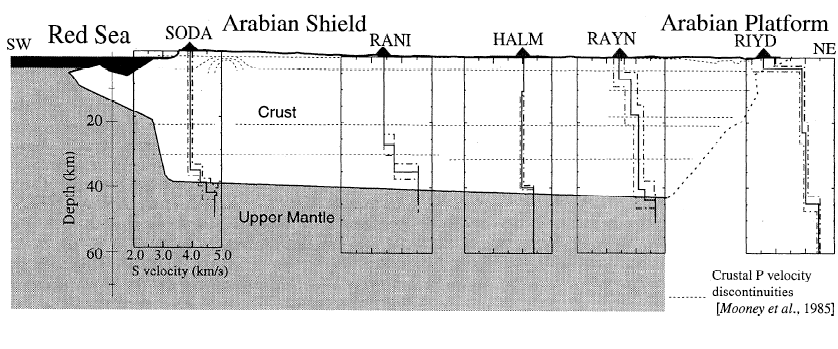
We determined crustal and lithospheric mantle velocity structure beneath the Arabian Shield through the modeling of receiver function stacks obtained from teleseismic P waves recorded by the 9 station temporary broadband array in western Saudi Arabia. The receiver function deconvolution technique was used to isolate the receiver-side PS mode conversions. A grid search method, which should yield an unbiased global minimum, was used to solve for a shear wave velocity model that is optimal and has the minimum number of layers needed to fit the receiver function waveform. Results from this analysis show that the crustal thickness in the shield area varies from 35 to 40 km in the west, adjacent to the Red Sea, to 45 km in central Arabia. Stability tests of each solution indicate that the models are relatively well constrained. We have also observed evidence for a large positive velocity contrast at sub-Moho depths at four stations at depths of 80 to 100 km. This discontinuity may represent a change in rheology in the lower part of the lithosphere or remnant structure from the formation of the Arabian Shield.
An edited version of this paper was published by AGU. Copyright 1998 American Geophysical Union.
Figure 4.
A comparison of our shear wave velocity models with the model of Mooney et al. [1985]. The shaded/white boundary marks the Moho boundary derived from the 1978 refraction experiment (Figure 1, see reference). Also shown are the major crustal P wave velocity anomalies (dashed lines). For the most part we observe no evidence of these boundaries; however, most of these are very subtle features (<0.15 km/s P wave velocity contrast). Only beneath station RAYN do we observe upper-crustal and mid-crustal velocity discontinuities. These features are also seen on the refraction model and correspond to substantial velocity contrast (~0.3 km/s).
